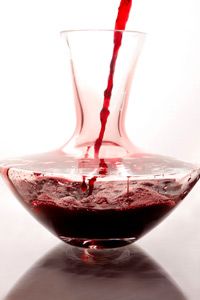She's rich, complex and has a full body like none other. Born of the Napa hillsides, she brings with her deep knowledge of vintner culture. No, we're not talking about your wife or a movie starlet; we're talking about Pax Wine Cellar's 2005 Syrah Obsidian [source: Pax Wine Cellars].
We all know that when wine is born, it's really just a bunch of grape juice, water, yeast and maybe some exotic spices. But it ages and ferments in tanks and barrels for months or years, and is then bottled and shipped off to be enjoyed or stored for further aging and development [source: The Olive Garden]. That's where the wine cellar comes in.
Advertisement
Since the days of Plato and his Symposium, men and women have been making, enjoying and documenting their wine, and today, wine cellars come in about as many varieties as the wine drinkers who build them.
There's the aboveground cellar, or wine room, the underground cellar and the small cellar, which holds fewer than 500 bottles and might be known as your wine closet. And there are wine chiller or refrigerator units as well [source: Consumer Reports]. While each of these storage areas can be purchased or built to suit the collector's needs, there are two distinct differences in cellars: they can be either active or passive, meaning the temperature is controlled (active) or passive (built underground) [source: The Wine Rack Shop].
Different wines need different temps, so knowing your reds from your whites will make a difference in how you store them [source: Consumer Reports]. We'll explore the world of wine cellars in this article, and once you've developed an appreciation for it all, we'll explain how you can build your own.
Advertisement


